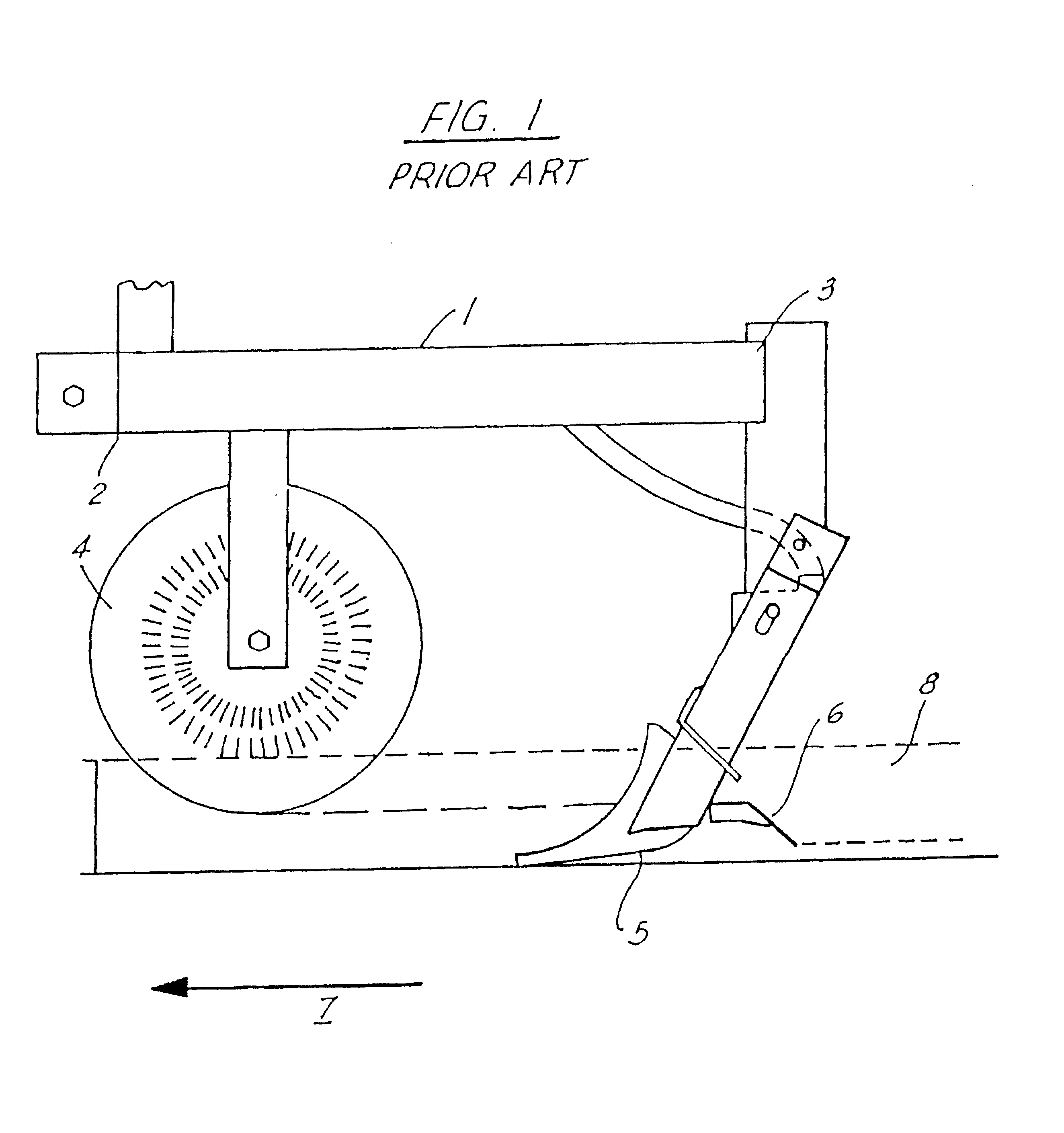Enhanced minimum tillage planter/renovator system
a planter/renovator and minimum tillage technology, applied in the field of minimal tillage planter/renovator system, can solve the problems of disturbing the renovation/planting process, requiring a lot of weight for cutting coulters, and providing an inefficient and sometimes difficult means of establishing leading slices, etc., to achieve convenient operation, enhance the seed bed and clean furrow, and reduce the effect of labor intensity
- Summary
- Abstract
- Description
- Claims
- Application Information
AI Technical Summary
Benefits of technology
Problems solved by technology
Method used
Image
Examples
first embodiment
Referring to FIGS. 3A-3C of the drawings, the present invention teaches a minimum tillage planter / renovator which dispenses with the necessity of a leading slicing coulter (4 in FIG. 1), providing an enhanced seedbed with a lighter implement.
As shown, the minimum tillage planter / renovator 10 comprises a frame 11 having a first, frontal end 12 and a second, rear end 13. Shown atop the frame is a standard, three point hitch 14, which may be utilized by a tractor or other implement to motivate the present system.
Continuing with the drawings, emanating from the frame 11 near the first end 12 in general vertical fashion is a front vertical support member 15, configured to support first 16 and second 17 coulter discs about said vertical support member, via axle 18 in angled relationship, as will be further discussed infra. As shown, the outer diameter 19 of the coulter discs 16, 17 may be rippled 20, scalloped, or otherwise shaped to form a cutting edge which supports a grinding action, a...
second embodiment
Preferred, Second Embodiment of the Present Invention
Utilizing a planter / renovator P having a frame, first and second coulters, and a foot shank / ripping point identical to the planter / renovator of FIGS. 5A-5F, unless otherwise indicated (the discussion of said planter / renovator is hereby incorporated by reference), continuing with FIG. 6, a second preferred embodiment of the present invention includes the planter / renovator of FIGS. 5A-5F, including the rippled coulters, frame, foot shank / ripping point, and fertilizer / seed dispensing system associated with first and second mole plows configured and as discussed supra, with the additional feature of furrow trimming means for trimming the edges of the furrow formed by the minimum tillage planter / renovator P, further enhancing the appearance and uniformity of the furrow. As shown, the frame F comprises a front section 500 and a rear section 501 which is pivotally connected 502, and which is held in a generally aligned fashion via shear ...
embodiment 8
The primary benefit of staggering the implements is that, in use, the ground cover between the rows, which may be spaced 13-15" inches apart via the spacing of the implements, is undisturbed on the surface, but below the surface, the sod / soil is fractured by the staggering of the implements, including primarily the ripping point of each implement, by the amount indicated above (preferred embodiment 8"). Accordingly, water, fertilizer, nutrients to feed the entire ground area are more readily distributed, while simultaneously facilitating more even distribution of water, fertilizer nutrients from one furrow to the next, renovating the soil, and feeding all of the root system of any plants in the furrows. A tractor pulling the main frame would then prepare as many furrows as there are implements provided upon the main frame.
PUM
 Login to View More
Login to View More Abstract
Description
Claims
Application Information
 Login to View More
Login to View More - R&D
- Intellectual Property
- Life Sciences
- Materials
- Tech Scout
- Unparalleled Data Quality
- Higher Quality Content
- 60% Fewer Hallucinations
Browse by: Latest US Patents, China's latest patents, Technical Efficacy Thesaurus, Application Domain, Technology Topic, Popular Technical Reports.
© 2025 PatSnap. All rights reserved.Legal|Privacy policy|Modern Slavery Act Transparency Statement|Sitemap|About US| Contact US: help@patsnap.com



